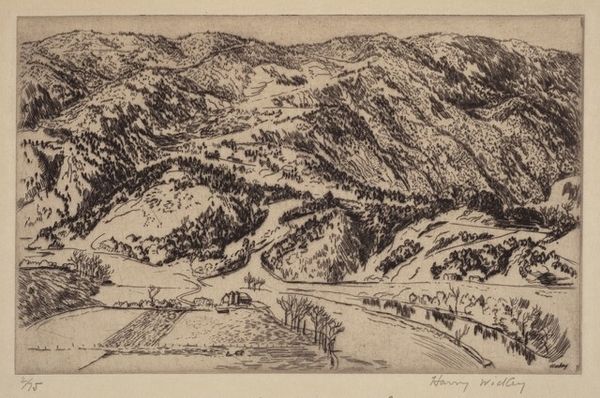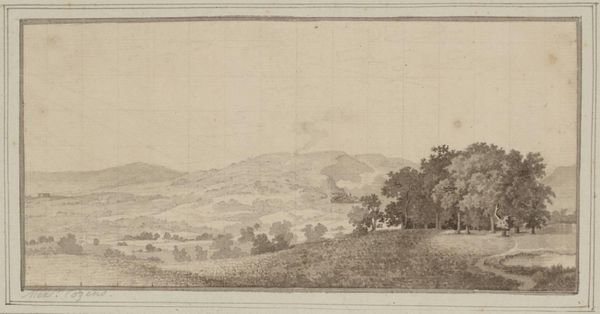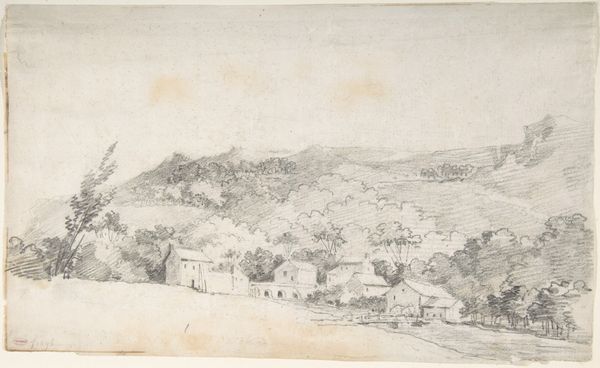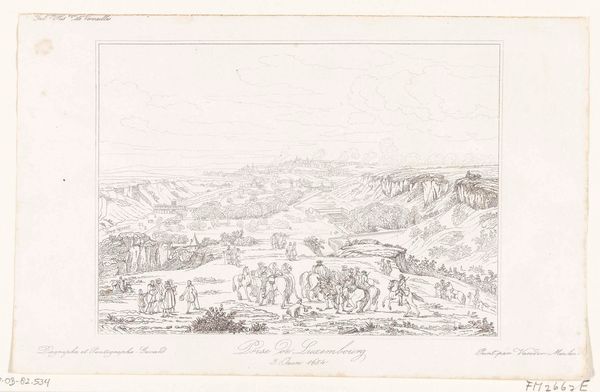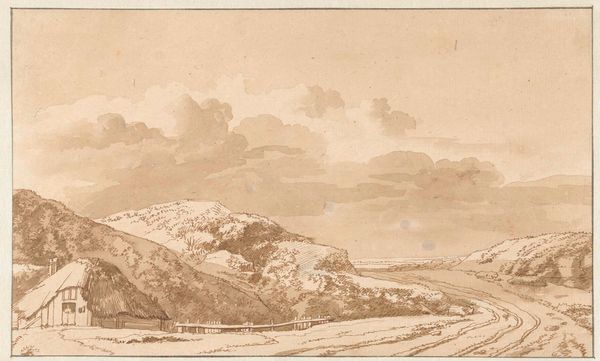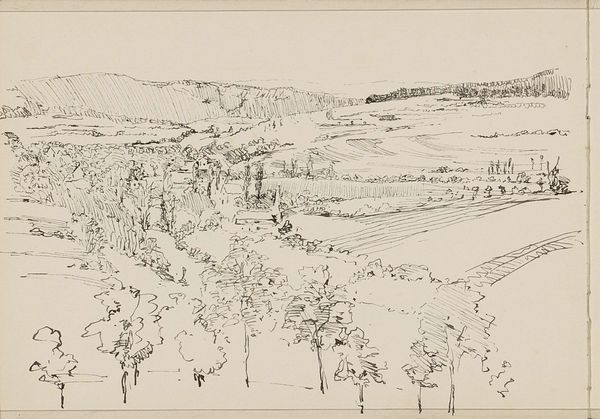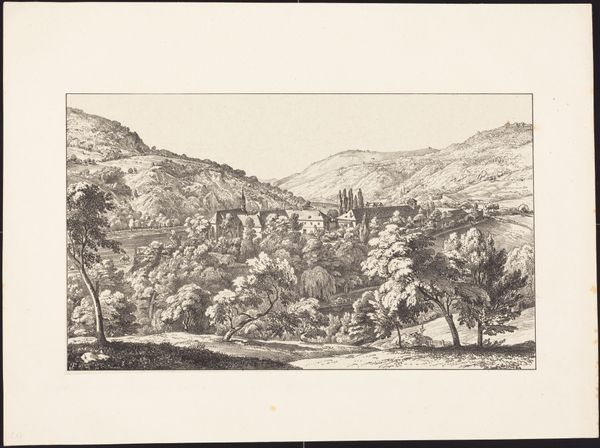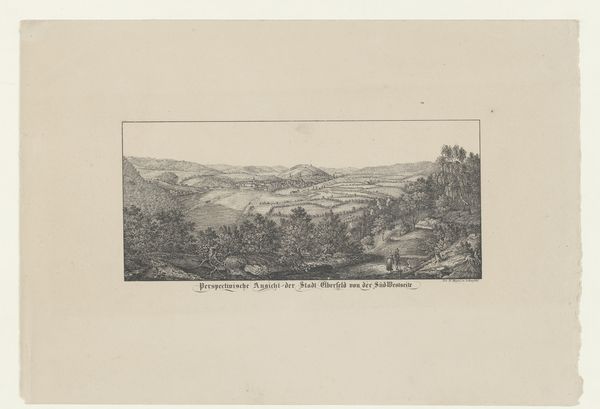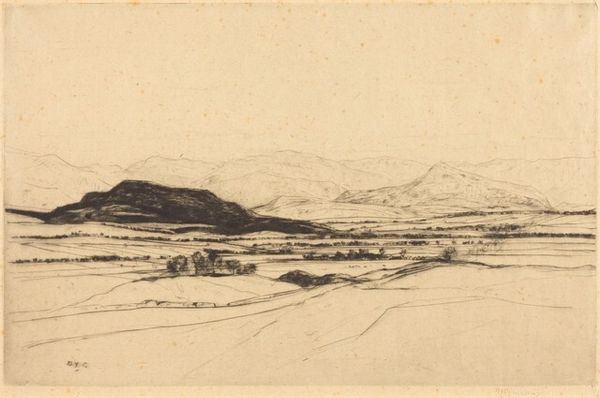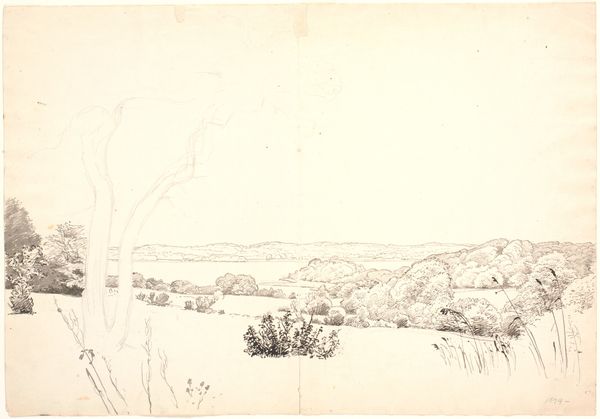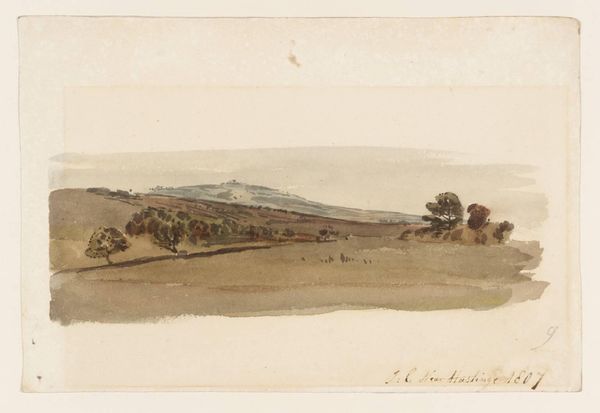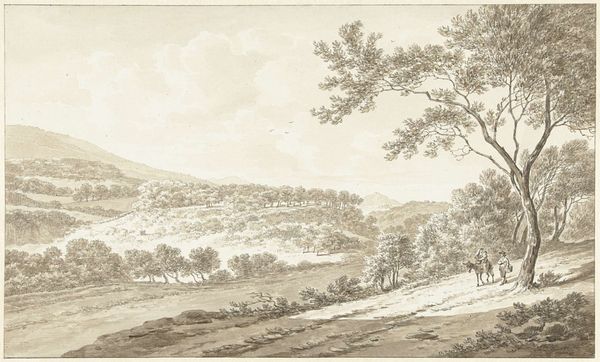
Copyright: Public domain
Curator: Look at this understated beauty—Théophile Alexandre Steinlen's "Landscape of Belmont," drawn in pencil in 1913. Editor: It's a world sketched in gray. Initially, there is a kind of rustic sensibility that I get from it – very labor intensive and clearly focused on the depiction of resources from Belmont’s farmlands. Curator: There's such tenderness in Steinlen's handling of the pencil. It almost feels like a love letter to the land, an embrace of the pastoral. It isn’t just about realism but a way to evoke sentiment towards a rapidly modernizing society. What does it mean, even then, to record landscapes through drawings? Editor: What stands out for me are the careful linear plots of land depicted. It suggests agricultural labor is segmented and thus creates very precise parameters to define how land gets distributed as a means for labor in that landscape. This landscape offers us insight on consumption and material practices in the context of Belmont. Curator: You make it sound so… clinical. But there’s poetry here! Can’t you feel it in the rolling hills and the soft, hazy light, rendered so expertly with just simple graphite? Editor: The medium dictates its limitation as well, yes. Graphite provides precision yet limits color and texture; however, in this, the process defines the outcome as its core material and production offers great context to interpret its place in Steinlen’s catalog. The labor defines it! Curator: Okay, okay, I get it. But sometimes, it is really just a lovely drawing, isn't it? Perhaps even just capturing a quiet moment, a pause before the landscape changed irrevocably. It feels hopeful even. Editor: And what are we consuming when we view it today? Is it an invitation for reflection? Perhaps by thinking about the material qualities as a reflection on that society, we come closer to interpreting such beauty, but through an ethos on human labor, social justice, and production. Curator: Maybe… And, who knows? Maybe that’s what Steinlen wanted us to see all along: The romance of hard work etched into the very earth. Editor: An unexpected harmony found. The hand behind the process is perhaps the unseen foundation for any interpretation, no?
Comments
No comments
Be the first to comment and join the conversation on the ultimate creative platform.
